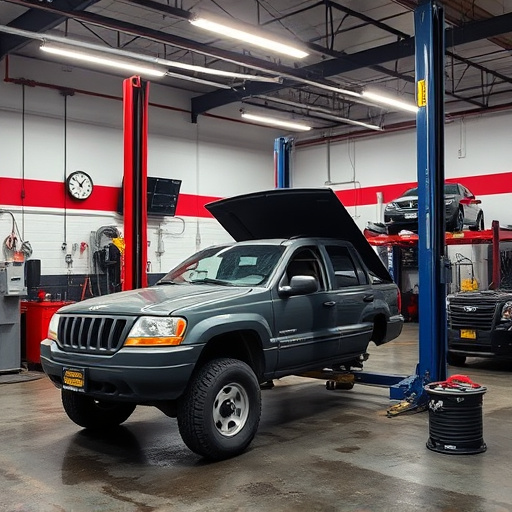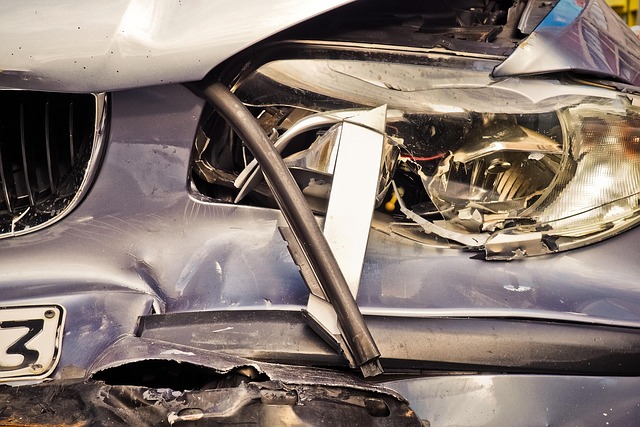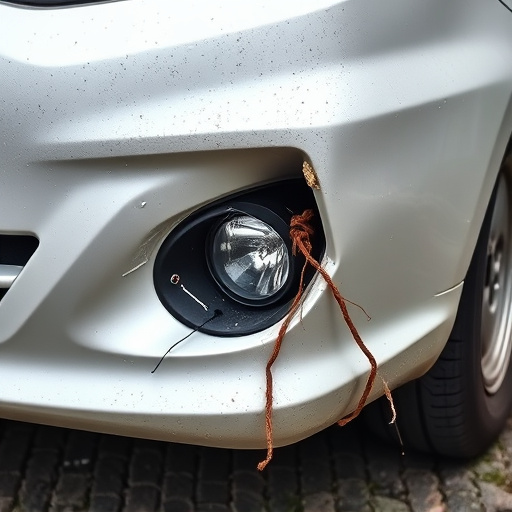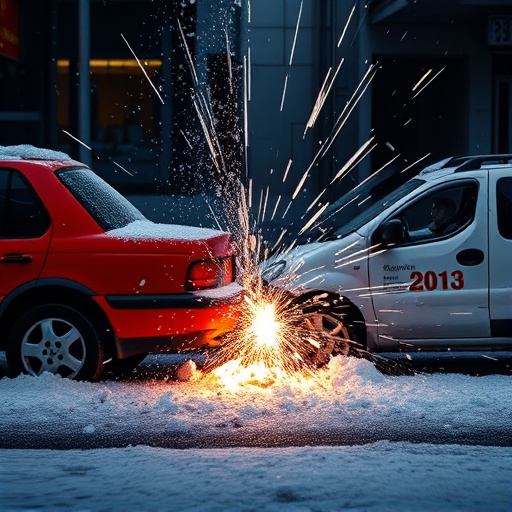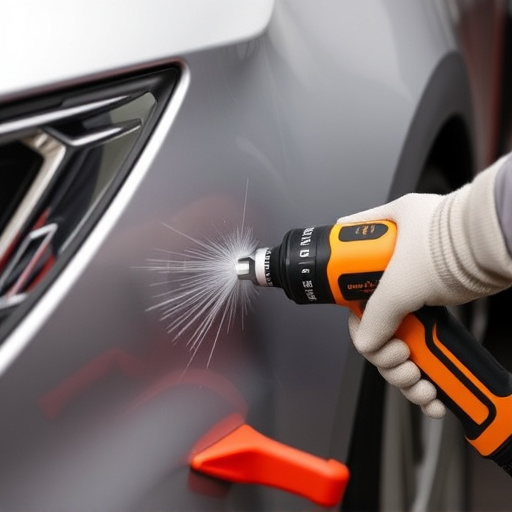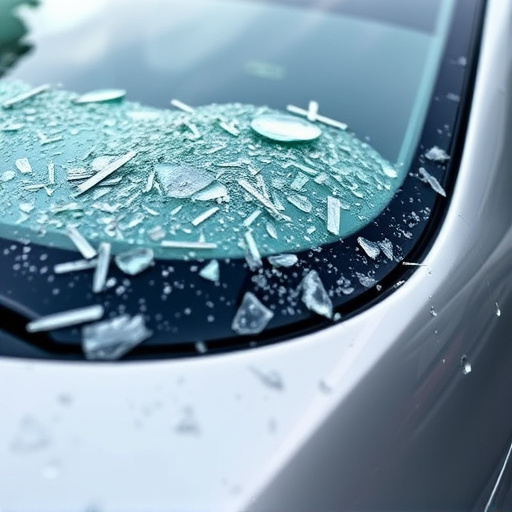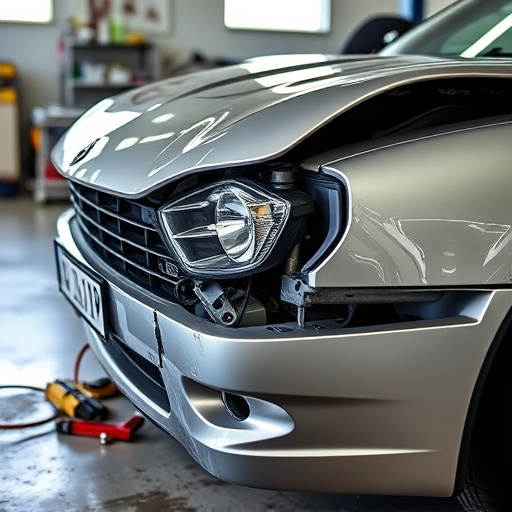Prompt and professional C-pillar repair is crucial for vehicle safety and structural integrity. Skilled technicians use advanced techniques including hydraulic presses, precision welding, and specialized paint matching to minimize downtime and enhance vehicle longevity. Optimized workshop practices, high-quality parts, and digital tools further streamline the process, ensuring customer satisfaction and faster turnaround times.
C-pillar repair is a critical aspect of vehicle maintenance, addressing structural damage that can compromise safety and performance. This article delves into the intricacies of C-pillar repair, exploring how understanding damage impacts repair strategies. We discuss effective repair processes and optimize time frames for efficiency, ensuring swift yet thorough fixes. By focusing on C-pillar repair techniques, we highlight their significance in reducing downtime and enhancing vehicle reliability.
- Understanding C-Pillar Damage and Its Impact
- The Process of Effective C-Pillar Repair
- Optimizing Repair Time Frames for Efficiency
Understanding C-Pillar Damage and Its Impact

C-pillar damage can significantly impact a vehicle’s structural integrity and overall safety. The C-pillar, or center pillar, is a crucial component in car bodywork, connecting the roof to the doors and providing lateral support. When this pillar becomes damaged, whether due to an accident, corrosion, or wear and tear, it can weaken the entire structure. This type of damage often requires prompt attention from experienced car body shop professionals who specialize in C-pillar repair.
In a car body shop, repairing the C-pillar involves several steps. First, the extent of the damage is assessed to determine if replacement or reinforcement is necessary. Skilled technicians use advanced techniques and tools to ensure precise repairs that match the vehicle’s original specifications. By addressing C-pillar issues promptly through quality car bodywork services, repair times can be reduced, minimizing downtime for the vehicle owner. Efficient C-pillar repair plays a vital role in achieving faster turnaround times, ensuring vehicles return to the road safely and reliably.
The Process of Effective C-Pillar Repair

The process of C-pillar repair is a meticulous art within the realm of automotive collision repair. Skilled technicians employ specialized tools and techniques to carefully extract and replace the damaged or bent C-pillar, a critical component in a vehicle’s bodywork. This intricate procedure begins with a thorough inspection to identify the extent of the damage. Once the assessment is complete, the repair team strategically removes the affected pillar, taking meticulous care to preserve adjacent structural elements.
After the removal, advanced techniques are utilized for straightening and realigning the C-pillar, ensuring it returns to its original specifications. This may involve specialized equipment like hydraulic presses and precision measuring tools. Once straightened, a meticulous painting process is initiated, matching the pillar’s color precisely with the vehicle’s bodywork. The final step in this meticulous journey involves reinstalling the repaired C-pillar, securing it firmly into place for a seamless finish. When executed by seasoned professionals at a reputable collision repair shop, C-pillar repair significantly contributes to restoring vehicles to their pre-accident condition, enhancing safety and aesthetics alike.
Optimizing Repair Time Frames for Efficiency
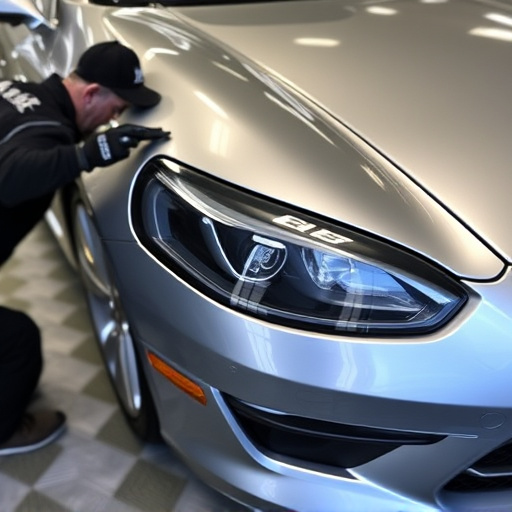
In the realm of automotive maintenance, efficient C-pillar repair plays a pivotal role in minimizing downtime and enhancing overall vehicle longevity. Optimizing repair time frames is not merely about speed; it’s a strategic approach to ensure quality and cost-effectiveness. By streamlining the process, repair shops can achieve remarkable results in record times. This involves employing advanced techniques specific to C-pillar repairs, such as precision welding and specialized paint matching, which contribute to a seamless fusion with the car body repair.
Efficient time management also extends beyond the workshop floor. Effective communication between technicians, clear work orders, and access to high-quality parts are cornerstones of successful C-pillar repair. Additionally, integrating digital tools for scheduling and inventory management can significantly reduce turnaround times. This holistic approach not only benefits the repair shop by boosting productivity but also guarantees customer satisfaction through prompt tire services and vehicle dent repair, ensuring their vehicles are back on the road in no time.
C-pillar repair is a critical process that not only restores structural integrity but also significantly influences vehicle repair time frames. By understanding the damage, employing effective repair methods, and optimizing workflows, automotive professionals can ensure faster turnaround times without compromising quality. This approach not only benefits garages and workshops but ultimately offers drivers peace of mind, knowing their vehicles are in reliable hands.
